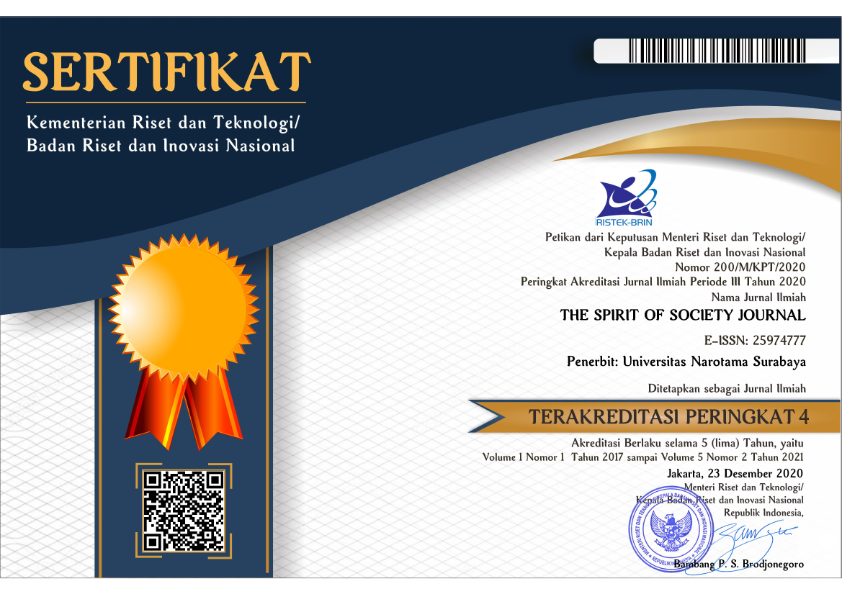Analysis Of Water Balance Aspect On The Results Of Geo-electric Interpretation With Schlumberger Configuration
Case Study of Sub-Watershed In Malang Regency
Abstract
The background of the problem is that the need for water for various purposes constantly increases in line with the population growth and changes in water use patterns caused by technological advances, industrial growth, and changes in land use. Moreover, from the existing problems, several problem formulations were obtained as the basis for identifying the presumption of groundwater presence, among others, 1). what is the magnitude of the infiltration rate in the study area in relation to the influence of land use conditions, 2). how the results of geo-electric interpretation using the Schlumberger configuration in estimating aquifer layers based on geo-hydrological aspects, and 3). how the effect of time and cost efficiency. Based on the results of the analysis and calculations, several things can be concluded, including: 1). the volume of the infiltration rate using the Horton method (q) by considering the land cover / land use conditions (C), it is known that the average infiltration capacity on the land in the study location per year is more than 200 cm / year, and has an effective enough infiltration capacity so that it is average. -the annual average can store water up to> 200 cm / year, 2). In that area, an aquifer layer was found at a depth of 30-50 meters at the GL 1 point, and the GL point at a depth of 22-55 meters, with the results of the analysis showing the ability of the land to carry out the infiltration process properly and validated from the results of geo-electric investigations, and 3). the results evaluation analysis is able to streamline the amount of operational costs for groundwater source investigations and the time of implementation
Downloads
References
Asdak, C, 2014. Hidrologi dan Pengelolaan Daerah Aliran Sungai. Yogyakarta: Gadjah Mada University Press.
A Octova, A S Muji1, M Raeis and R R Putra. 2019. Identification of quifer using Geoelectrical Resistivity Method with Schlumberger Array in Koto Panjang Area,Nagari Tigo Jangko, Lintau Buo Sub-District, Tanah Datar Regency. Department of Mining Engineering, Faculty of Engineering, Universitas Negeri Padang, Department of Physics, Faculty of Mathematics and Natural Sciences, Universitas Negeri Padang, / Journal of Physics: Conf. Series 1185 (2019) 012009.
Bambang Triatmodjo, 2008, Hidrologi Terapan, Beta Offset, Yogyakarta.
BR, Sri Harto. (1993). Analisis Hidrologi. Jakarta : Gramedia Pustaka Utama.
Darsono, 2016, Identifikasi Akuifer Dangkal dan Akuifer Dalam dengan Metode Geolistrik (Kasus: Di Kecamatan Masaran). Lab. Geofisika, Jurusan Fisika, FMIPA, Universitas Sebelas Maret / Indonesian Journal of Applied Physics (2016) Vol. No. Halaman 40.
D.C Soemarto, 1996,Sistem Hidrologi,Yogyakarta.
Imam Subarkah, 1980: Hidrologi Untuk Perencanaan Bangunan Air, Idea Dharma, Bandung.
Purwanto, I., dan Ngaloken. 1995. Pengaruh berbagai jenis vegetasi terhadap kapasitas infiltrasi tanah di Cijambu, Sumedang, Jawa Barat. Bul. Pen. Hutan 573: 13- 16.
Seyhan, Ersin., 1977. Dasar-dasar Hidrologi.Gadjah Mada Universiy Press. Yogyakarta.
Soewarno, (1995), ‘Hidrologi”, Aplikasi metode statistic untuk analisa jilid I, Penerbit Nova – Bandung.
Sosrodarsono S., 1980, Hidrologi untuk Pengairan, Badan Penerbit PT. Pradnya Paramita, Jakarta.
Copyright (c) 2021 THE SPIRIT OF SOCIETY JOURNAL

This work is licensed under a Creative Commons Attribution-ShareAlike 4.0 International License.












